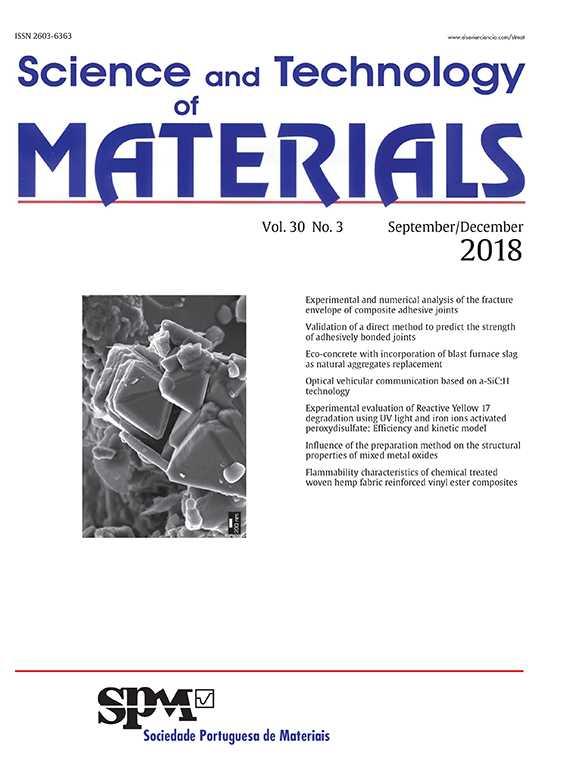This research presents two type of cactus (Opuntia ficus-indica) (natural cactus (NC) and dried cactus (DC)) as a biological adsorbent, evaluated for the effectiveness of hexavalent chromium Cr(VI) removal from artificially contaminated aqueous solutions. The characterization of the biosorbents were made using different techniques such as X-ray Fluorescence (XRF), Fourier transform infrared (FTIR) and Scanning Electron Microscope (SEM) to better understand the adsorption mechanism-property relationship. Adsorption kinetics showed that the adsorption behavior followed the pseudo-second-order kinetic model. The adsorption isotherms fitted by the Langmuir model showed that the highest Cr(VI) adsorption capacities using natural cactus and dried cactus are 21.19 and 2.63mg/g respectively. Additionally, various physiochemical parameters such as contact time, adsorbent dosage, pH and temperature were investigated in a batch-adsorption technique. The results illustrated that the cactus have significant potential as economic, safe and effective adsorbent materials for the Cr(VI) adsorption from the aqueous solution.
Journal Information
Vol. 29. Issue 3.
Pages 145-152 (September - December 2017)
Vol. 29. Issue 3.
Pages 145-152 (September - December 2017)
Full text access
Application in chromium (VI) removal of natural and dried cactus
Visits
1409
F. Sakr
, A. Sennaoui, M. Dinne, S. Alahiane, I. Bakas, M. Belmoden, A. Assabbane
Corresponding author
Laboratory of Electrochemistry, Catalysis and Environment, Team Catalysis and Environment, Faculty of Science, Ibn Zohr University, Agadir, Morocco
This item has received
Article information
Abstract
Keywords:
Adsorption
natural cactus
dried cactus
hexavalent chromium
biosorbent
isotherms
kinetic
Full text is only aviable in PDF
References
[1]
A.K. Shanker, C. Cervantes, H. Loza-Tavera, S. Avudainayagam.
Environ. Int, 31 (2005), pp. 739
[2]
K.J. Cronje, K. Chetty, M. Carsky, J.N. Sahu, B.C. Meikap.
Desalination, 275 (2011), pp. 276
[3]
B. Saha, C. Orvig.
Coord. Chem. Rev, 254 (2010), pp. 2959
[4]
Z. Zainul Akmar, S. Marlini, M. Nurfadilah, A. Wan Azlina.
Desalination, 244 (2009), pp. 109
[5]
R.Y. Taj, S. Renganathan, N. Partha, G. Baskar, M. Velan.
Clean - Soil, Air, Water, 37 (2009), pp. 787
[6]
D. Sarkar, S.K. Das, P. Mukherjee, A. Bandyopadhyay.
Clean - Soil, Air.
Water, 38 (2010), pp. 764
[7]
P.S. Kumar, S. Ramalingam, R.V. Abhinaya, S.D. Kirupha, A. Murugesan, S. Sivanesan.
Clean - Soil Air Water, 40 (2012), pp. 188
[8]
S. Chen, Q. Yue, B. Gao, Q. Li, X. Xu, K. Fu.
Bioresour. Technol, 113 (2012), pp. 114
[9]
K. Mohanty, M. Jha, B.C. Meikap, M.N. Biswas.
Chem. Eng. J, 117 (2006), pp. 71
[10]
J.N. Sahu, J. Acharya, B.C. Meikap.
J. Hazard. Mater, 172 (2009), pp. 818
[11]
J. Rodier, B. Legube, N. Merlet.
Coll..
L’analyse de l’eau, 9ème edition, Dunod, (2009),
[12]
F.T. Li, H. Yang, Y. Zhao, R. Xu.
Chinese Chem. Lett, 18 (2007), pp. 325
[13]
N.V. Farinella, G.D. Matos, M.A.Z. Arruda.
Bioresour. Technol, 98 (2007), pp. 1940
[14]
J.V. Ibarra, R. Moliner.
J. Anal. Appl. Pyrolysis, 20 (1991), pp. 171
[15]
N. Barka, K. Ouzaouit, M. Abdennouri, M. Makhfouk.
J. Taiwan Inst. Chem. Eng, 44 (2013), pp. 52
[16]
D. Park, S.R. Lim, Y.S. Yun, J.M. Park.
Bioresour. Technol, 99 (2008), pp. 8810
[17]
B. Mahjoub, I. Fkih, M.C. Nacibi. Élimination du chrome hexavalent des solutions aqueuses par adsorption sur feuilles brute de de Posidonia oceanica (L.): cinétiques, équilibres et modélisation, Déchets - Revue francophone d’écologie industrielle, Sousse, 2009, pp. 19-26.
[18]
M.J. Sarre, M. Mazet.
Rev. Sci. Eau, 1 (1988), pp. 55
[19]
N. Daneshvar, D. Salari, S. Aber.
J. Hazard. Mater, B94 (2002), pp. 49
[20]
A. Asfaram, M. Ghaedi, G.R. Ghezelbash.
RSC Adv, 6 (2016), pp. 235999
[21]
M.C. Ncibi, B. Mahjoub, M. Seffen.
J. Hazard. Mater, B139 (2007), pp. 280
[22]
O. Samson, C. Owalude, Adedibu.
Tella, J. Basic & Appl. Sci, 5 (2016), pp. 377
[23]
B. Song, G. Zeng, J. Gong, P. Zhang, J. Deng, C. Deng, J. Yan, P. Xu, C. Lai, C. Zhang, M. Cheng.
Chemosphere, 172 (2017), pp. 449
[24]
C. Kannan, K. Muthuraja, M.R. Devi.
J. Hazard. Mater, 10 (2013), pp. 244
[25]
K. Selvi, S. Pattabhi, K. Kadirvelu.
Bioresour. Technol, 80 (2001), pp. 87
[26]
D.C. Sharma, C.F. Forster.
Bioresour. Technol, 49 (1994), pp. 31
[27]
S. Mor, K. Ravindra, N.R. Bishnoi.
Bioresour. Technol, 98 (2007), pp. 954
[28]
S.S. Baral, S.N. Das, P. Rath, G.R. Chaudhury.
Bioch. Eng. J, 34 (2007), pp. 69
[29]
M. Dakiky, M. Khamis, A. Manassra.
M. Mer’eb, Adv. Environ. Res, 6 (2002), pp. 533
[30]
N. Zhu, T. Yan, J. Qiao, H. Cao.
Chemosphere, 164 (2016), pp. 32
Copyright © 2017. Portuguese Society of Materials (SPM)





